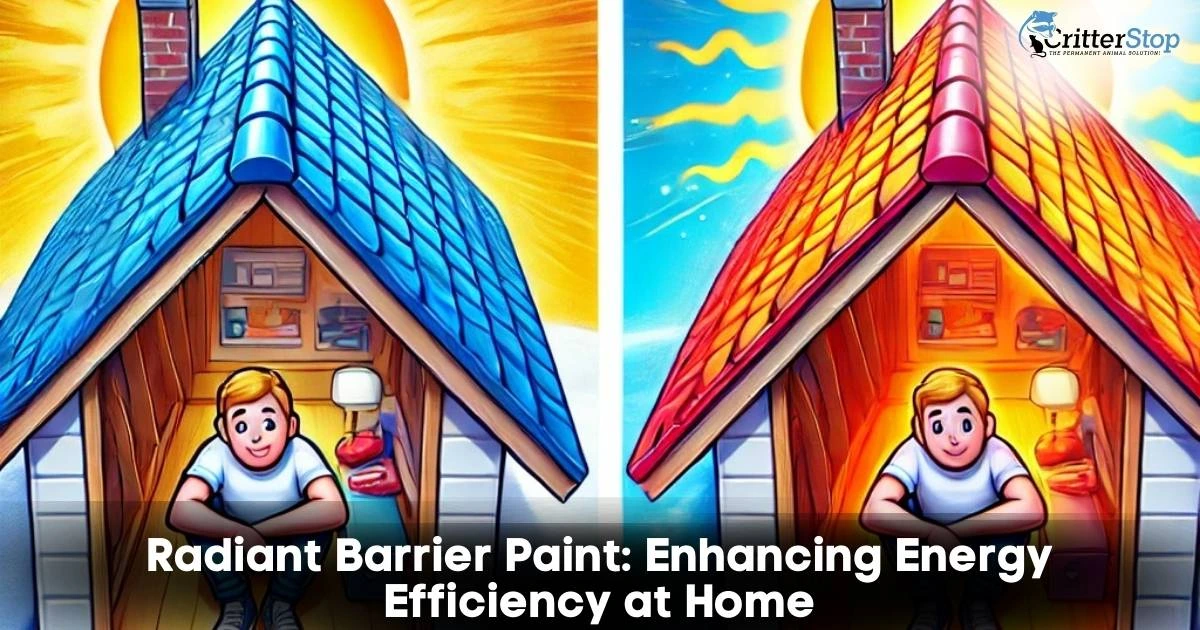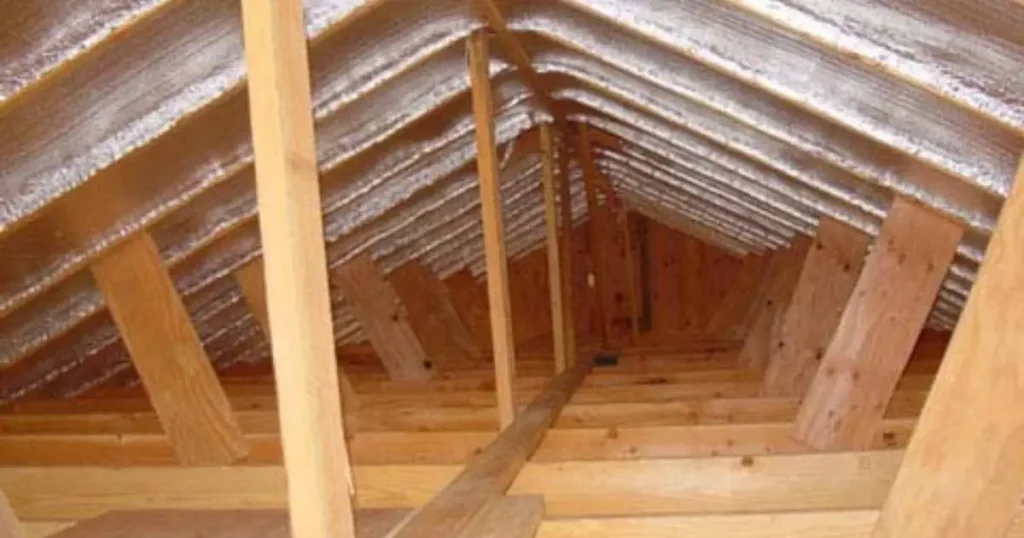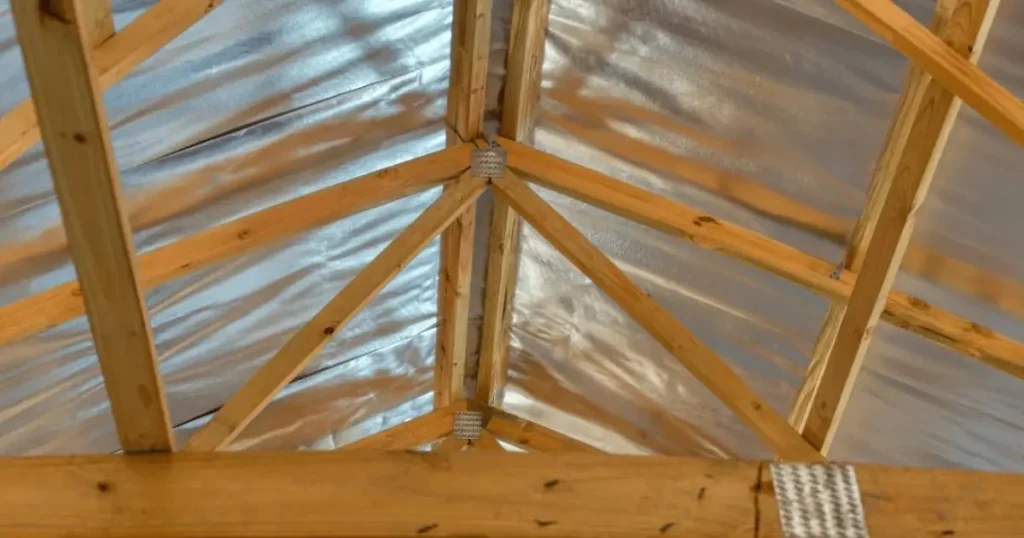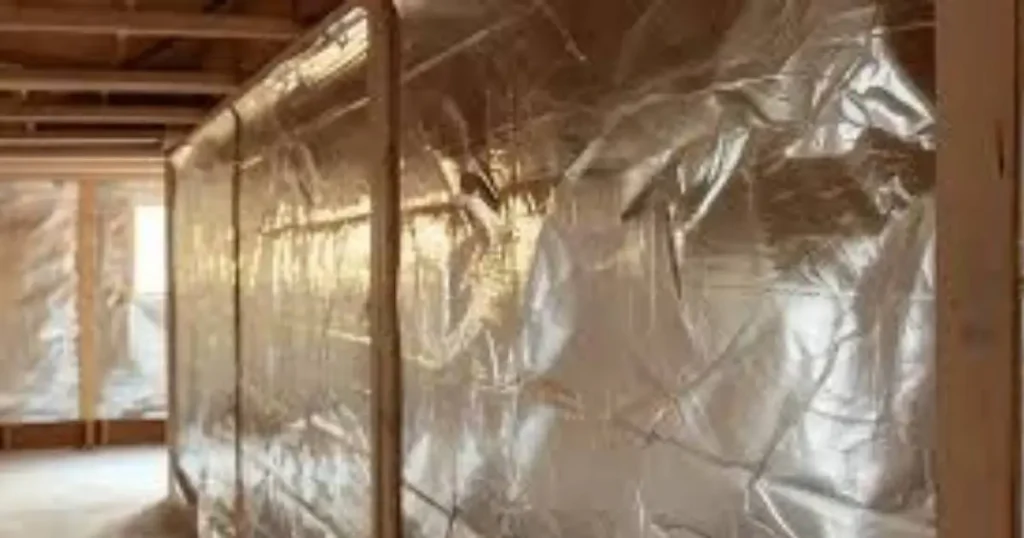
Radiant barrier paint is indeed gaining traction as a popular solution for homeowners aiming to boost energy efficiency. Applied to surfaces that reflect heat, this specialized paint helps to reduce cooling costs by minimizing heat gain. It acts as a thermal barrier, reflecting radiant heat away from the painted surface, which can lead to lower energy bills.
Homeowners interested in sustainable living will find that radiant barrier paint offers an attractive option for both new constructions and retrofitting existing homes. Its ability to be applied to various materials like metal and wood is a significant advantage making it versatile for different building types. This adaptability allows users to enhance their space's energy efficiency without extensive modifications.
For those looking to conserve energy and reduce expenses, this paint provides a viable and straightforward method of improving thermal comfort. Integrating this technology into a home’s design can contribute to broader energy-saving efforts, aligning with modern trends towards more eco-friendly lifestyle choices.

Radiant barriers play a vital role in reducing heat transfer and improving energy efficiency. Their effectiveness hinges on fundamental concepts of heat transfer and specific material properties, such as reflectivity and absorptivity. Exploring these elements provides insights into how these barriers function.
Heat transfer occurs through three primary mechanisms: convection, conduction and radiation. Radiant barriers primarily address heat transfer through radiation. This type of heat transfer involves electromagnetic waves, distinct from the molecular interactions found in conduction or fluid movement in convection.
Materials with high reflectivity can significantly reduce radiant heat gain by reflecting it away. Conversely, low absorptivity helps prevent materials from retaining heat. Understanding the principles of heat transfer is vital for grasping how radiant barriers work to minimize heat transfer and enhance thermal comfort.
Radiant barriers are specifically engineered to reflect radiant heat, which is key to their effectiveness in enhancing energy efficiency. This mechanism relies on materials with a high reflectivity like aluminum foil. When correctly installed facing an open space, these barriers reflect up to 97% of radiant heat.
Various types include foil-faced decking, sheet barriers, and spray-on barriers. Their functionality depends on the installation and whether it addresses specific radiation zones. Effective application requires precise placement to avoid dust accumulation, which can decrease reflectivity and performance.
Reflectivity and absorptivity are critical in determining a radiant barrier's effectiveness. A high-reflectivity material reflects more radiant energy, lowering heat transfer into indoor spaces. Materials like polished aluminum and metallized films excel in this aspect.
Absorptivity is inversely related to reflectivity; lower absorptivity means less heat retention. This property ensures that radiant barriers remain cool, reducing heat transfer through conduction and convection. By maintaining a balance between these properties, radiant barriers achieve optimal thermal performance.

Radiant barriers come in various forms, each designed to reflect heat effectively and improve energy efficiency. Among the commonly used options are radiant barrier paint, foil, and foam board, each with distinct characteristics and benefits.
Radiant barrier paint is often applied to surfaces to reflect radiant heat. This type of barrier, also known as radiant barrier spray, can be used on walls, ceilings, or even roofs. Spray on radiant barrier may not offer the same level of reflection as traditional foil barriers but provides a straightforward application process and can fit into tight spaces where foil might not reach.
Foil, on the other hand, consists of a highly reflective aluminum surface that reflects up to 95% of radiant heat. It's known for its effectiveness in reducing attic temperatures and overall heat gain. Unlike paint, it requires installation in a way that creates an air gap, which can be a more labor-intensive process.
Radiant barrier foam board combines a rigid foam core with a reflective foil surface. This type provides both thermal resistance and radiant heat reflection.
One of the main advantages is its structural support which adds insulation value alongside its reflective properties. It's particularly useful for walls and roofs where additional support is needed. Foam board is easier to install than foil since it can be cut and fitted directly into place without needing an existing structure to attach to.
This dual function makes it a versatile choice for projects requiring both insulation and radiant heat reflection. The foam board can enhance energy efficiency, making it a popular choice for new construction or significant renovations.
Radiant barrier paint can effectively reduce heat transfer in buildings, but proper application is crucial for optimal performance. The process involves careful preparation, adherence to safety measures, and making informed choices about whether to apply the paint professionally or do it yourself.
Before applying radiant barrier paint, surfaces should be clean and free of dust or residue, which can impede adhesion. Cleaning can be accomplished with a mild detergent and water. Ensure all surfaces are dry before beginning the process.
Using appropriate protective gear is vital when working with any materials, including radiant barrier paint. Ventilation is key to minimize inhalation of any fumes. Reading and following the manufacturer's instructions is crucial for the effective and safe use of the product, including recommended application temperatures and tools. An infrared thermometer can be useful for monitoring temperatures during application.
Choosing between professional application and a DIY approach depends largely on budget and skill level. Professional services often provide expertise and efficiency, ensuring the paint is applied under optimal conditions for maximum efficacy.
For DIY enthusiasts, a careful approach can yield good results. Equipment such as sprayers or high-quality brushes may be necessary. The application technique should follow detailed instructions, often best done with help to achieve even coverage. It's critical to assess one's own comfort level with the task and the potential need for assistance.
Spray-on radiant barriers are applied on surfaces to improve thermal efficiency by reflecting radiant heat. These barriers are particularly useful for attics and other spaces where heat resistance is essential.
Choosing the proper spray-on radiant barrier involves considering several factors. Material composition plays a critical role; high aluminum content typically enhances reflectivity. Checking the compatibility of the radiant barrier paint with the intended substrate such as wood, metal, or concrete is crucial for ensuring optimal performance and durability.
Environmental factors like temperature and humidity levels can affect performance. Opt for products specifically rated for these conditions. Safety data, such as VOC levels, should also be reviewed to ensure compliance with your local regulations.
Product reviews and expert recommendations can provide insights based on actual usage scenarios. Verifying warranty details and ease of purchase are also beneficial. With these considerations in mind, selecting the correct option becomes a manageable task.
Proper application of spray-on radiant barriers is crucial for optimal performance. By thoroughly cleaning and preparing the surface, you can ensure better adhesion. A clean surface will allow the barrier to bond effectively, increasing its thermal resistance.
Using a sprayer, apply the product evenly across the target area. Consistent layering is key to achieving maximum reflectivity. Test sprays can help calibrate the nozzle settings for even application. Pay attention to manufacturer instructions and drying times to secure the best results.
Diligently following health and safety precautions is crucial when working with materials like spray barriers. Protect exposed skin and eyes, and ensure adequate ventilation when applying the product. A well-ventilated space reduces the risk of inhaling any harmful chemicals involved in the spray process.

Radiant barrier paint plays a crucial role in enhancing energy efficiency by reflecting radiant heat. This section examines the effectiveness of these coatings through testing, energy savings, and their durability over time.
Various tests indicate that radiant barrier paint effectively reduces heat transfer. Thermal resistance and emissivity are key performance metrics in these evaluations. Tests often compare conventional paints to specialized coatings, showing a significant reduction in absorbed heat.
When applied properly, homes using radiant barrier paint can see notable energy savings. Air conditioning needs may drop during hot months, as reflected in lower utility bills. The type of paint, application method, and coverage area influences the efficiency and cost-effectiveness significantly.
Durability remains a major consideration. Radiant barrier paint often faces challenges from environmental exposure, impacting its longevity. UV resistance is a crucial factor in extending the life of these coatings.
Many manufacturers use advanced formulations to resist wear and weathering. Regular inspection and maintenance can help sustain performance over extended periods. Variations in product quality can significantly impact the lifespan and effectiveness of radiant barrier paints.
The integration of radiant barrier paint with traditional insulation and other energy-saving strategies creates a comprehensive approach to energy efficiency.
Radiant barrier paint complements the performance of traditional insulation, such as fiberglass or foam. By reflecting radiant heat, it reduces the overall heat flow through the building's envelope. This combination can improve thermal performance, resulting in potential energy savings and increased comfort.
Proper installation is crucial. Radiant barrier paint is typically applied to the interior surfaces of attic roofs or walls. It is essential to maintain an air space between the radiant barrier and the insulation layer. This setup ensures optimal reflective capabilities and prevents heat transfer through conduction.
In climates with intense solar exposure, radiant barrier paint can significantly reduce cooling loads in summer months. For colder regions, it might be beneficial primarily during warmer seasons due to its focus on reducing heat gains. An effective strategy is selecting a suitable paint formulation to work well with existing insulation types.
Radiant barrier paint is frequently used in conjunction with various energy efficiency strategies to maximize benefits. When paired with efficient HVAC systems, it can further reduce energy consumption and improve a building's sustainability.
It's compatible with energy-efficient windows and doors, minimizing thermal bridging. This synergy ensures that heat is not gained or lost excessively through other elements, maintaining a stable indoor environment.
These paints also align with renewable energy initiatives. For example, solar panels work more efficiently when buildings have optimized heat management, potentially reducing the need for excessive energy production.
By integrating radiant barrier paint with these strategies, buildings can achieve a more comprehensive approach to energy conservation. The use of multiple energy-saving technologies can significantly enhance both cost savings and environmental benefits.
Radiant barrier paint presents both initial costs and long-term savings opportunities. Evaluating its cost-effectiveness requires comparing it to other radiant barrier types in various scenarios.
The initial cost of applying radiant barrier paint can vary significantly, mainly influenced by factors like project scale and quality of materials.
Energy savings become apparent in reduced heating and cooling expenses. This can often lead to a decrease in energy bills by 5% to 10%, translating to savings over time.
The time required to recoup this investment often depends on climate conditions and the home's insulation efficiency. In areas with extreme temperatures, the payback period may be shorter. Weighing various factors is crucial when deciding on this option.
Radiant barrier paint is often compared to alternatives like foil-based barriers or reflective panels. Paint is easier to apply but might offer slightly lower effectiveness than traditional foil products.
Foil barriers provide higher reflectivity, potentially leading to better heat reduction. Reflective panels can also be more effective in certain installations, yet they might require professional installation.
Each type has its set of advantages and drawbacks. By carefully weighing ease of application, efficiency, and cost, homeowners can make informed choices that best fit their needs and goals. Comparing these options can offer insight into which product might provide the greatest return on investment for their specific situation.

Radiant barrier paint offers potential benefits for reducing energy consumption and enhancing building efficiency. Exploring its environmental implications and its role in sustainable practices is crucial for informed choices.
Radiant barrier paint is designed to reflect radiant heat, reducing energy required for cooling. By decreasing air conditioning use, it lowers greenhouse gas emissions associated with power generation. This contributes indirectly to tackling climate change by promoting energy efficiency in homes and buildings.
The production process of radiant barrier paints also influences environmental impact. Selecting products with eco-friendly materials and minimal VOCs can lessen the release of harmful pollutants and contribute to healthier indoor air quality. Furthermore, companies are working to improve manufacturing methods and material sourcing, aiming for reduced environmental footprints.
Integrating radiant barrier paint into construction projects supports sustainable building initiatives. Radiant barrier paint can be part of a comprehensive package that includes other energy-efficient materials and designs, leading to significant reductions in energy demand. Such practices contribute positively to sustainable urban development goals.
Choosing radiant barrier paint during construction or renovation can contribute to achieving Leadership in Energy and Environmental Design certification, which values energy efficiency and reduced environmental impact. This gives builders and homeowners financial advantages through potential energy savings and increased property value.
Radiant barrier paints contribute significantly to creating greener cities by enhancing the energy efficiency of both new and existing buildings, encouraging more eco-friendly living spaces. Effective implementation of these solutions is important for the growing demand for sustainable construction.
Critter Stop offers exceptional support tailored to your needs. They specialize in attic insulation, enhancing the effectiveness of radiant barrier paint, which is vital for energy efficiency.
Radiant barrier paint differs from traditional foil barriers in specific ways, offers limited color options, and can be purchased from various residential supply stores. The paint can be applied to walls and its lifespan varies depending on conditions. Additionally, using additives can provide benefits in energy efficiency.
Radiant barrier paint acts as a reflective coating, unlike traditional foil barriers which use thin sheets of reflective material. Radiant barrier paint is applied much like regular paint but does require specific preparation to ensure maximum effectiveness.
Radiant barrier paint is suitable for application on interior walls. It reflects radiant heat, thereby enhancing energy efficiency in homes, especially when applied in attics or on south-facing walls.
Radiant barrier paint is primarily available in silver or metallic shades. These colors are necessary for its heat-reflective properties and are not usually offered in a range of decorative colors.
Radiant barrier paint can be purchased at home improvement stores, specialized online retailers, and through suppliers focusing on energy-efficient home solutions.
Using additives in radiant barrier paint can enhance thermal performance. These additives improve the paint’s ability to reflect infrared radiation, which can reduce cooling costs.
The lifespan of radiant barrier paint varies, though it typically maintains effectiveness for 10-15 years. Regular inspections and proper application are crucial for maximizing longevity.
Visit our Critter Library and learn more about our furry friends







